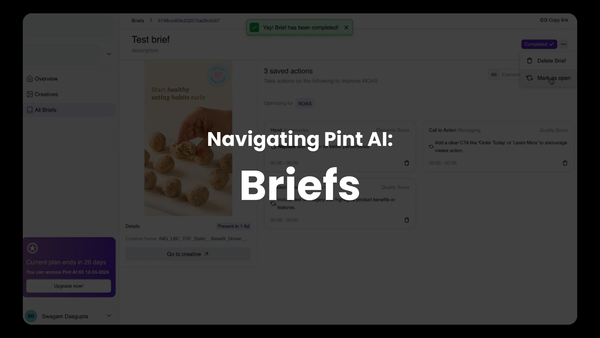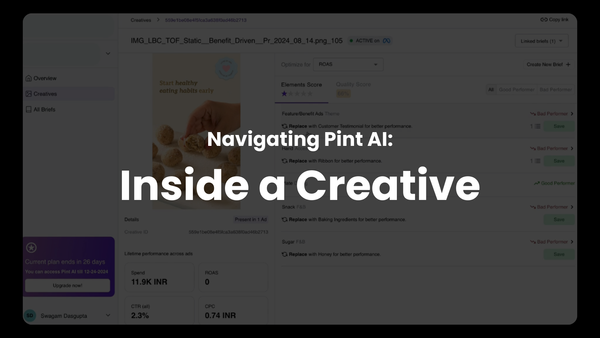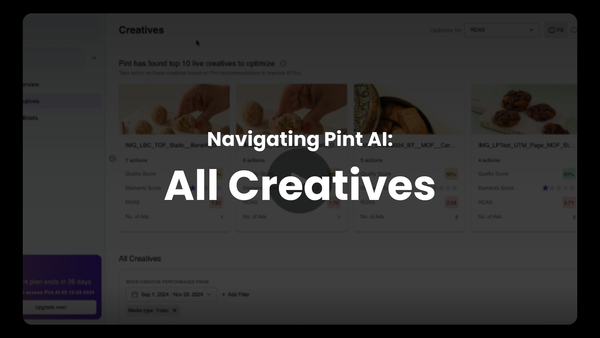Creative Analytics 106: The Link Between Neuromarketing & Digital Ads
Neuromarketing is an emerging field of study, that looks at how people respond to advertising and other brand-related messages. This has a deeper impact on your digital ads that you know. Here's how.

Neuromarketing and digital advertising intersect in a dynamic and powerful way; marketers can learn from popular neuroscience findings to experiment and enhance the effectiveness of digital marketing strategies.
This relationship is built on the understanding that consumer behavior is deeply influenced by subconscious processes, emotions, and cognitive biases, which can be measured and analyzed through various neuromarketing techniques.
Understanding Neuromarketing
Neuromarketing is the application of neuroscience principles to marketing. It involves studying how the brain responds to marketing stimuli, including advertisements.
These techniques provide insights into the emotional and cognitive responses that drive consumer behavior.
Key Neuromarketing Principles in Digital Ads
Emotional Engagement:
Neuromarketing studies have shown that emotions play a crucial role in decision-making. Ads that evoke strong emotional responses are more likely to be remembered and to influence purchasing decisions. Techniques like storytelling and emotional imagery can significantly enhance the impact of digital ads.
Cognitive Biases:
Neuromarketing leverages cognitive biases such as loss aversion, scarcity, and social proof to influence consumer behavior.
For example, highlighting limited-time offers (scarcity) or showcasing customer testimonials (social proof) can increase the effectiveness of digital ads by tapping into these subconscious drivers.
Visual Appeal:
The human brain processes visual information quickly and prefers images over text. Neuromarketing research has shown that ads with strong visual elements, such as attractive colors and compelling imagery, can enhance engagement and recall.
Practical Applications in Digital Advertising
Optimizing Ad Content:
By analyzing neural and physiological responses, marketers can identify which aspects of an ad are most effective. This includes determining whether a subject should look directly at the camera, the impact of color choices, and the placement of branding elements.
Enhancing User Experience:
Neuromarketing insights can be applied to improve the overall user experience on digital platforms. This includes designing more intuitive and engaging interfaces, which can lead to higher engagement and conversion rates.
Targeted Messaging:
Understanding the emotional and cognitive triggers that resonate with different audience segments allows for more personalized and targeted messaging. This can lead to higher relevance and effectiveness of digital ads, as messages are tailored to the specific preferences and behaviors of the target audience.
How neuromarketing can influence customer decisions
Ethical Considerations
While neuromarketing offers powerful tools for enhancing digital ads, it also raises ethical concerns. It is important for marketers to use these techniques responsibly, ensuring transparency and respect for consumer privacy.
Ethical considerations include avoiding manipulation and ensuring that marketing practices do not harm or deceive consumers.
Conclusion
The relationship between neuromarketing and digital ads is rooted in the ability to understand and influence consumer behavior at a deeper level.
By leveraging insights from neuroscience, marketers can create more effective, engaging, and personalized digital advertising strategies that resonate with their audience and drive better results.
The next part of this series will look at how you can use creative analytics and neuromarketing insights to take your digital ads to the next level!





